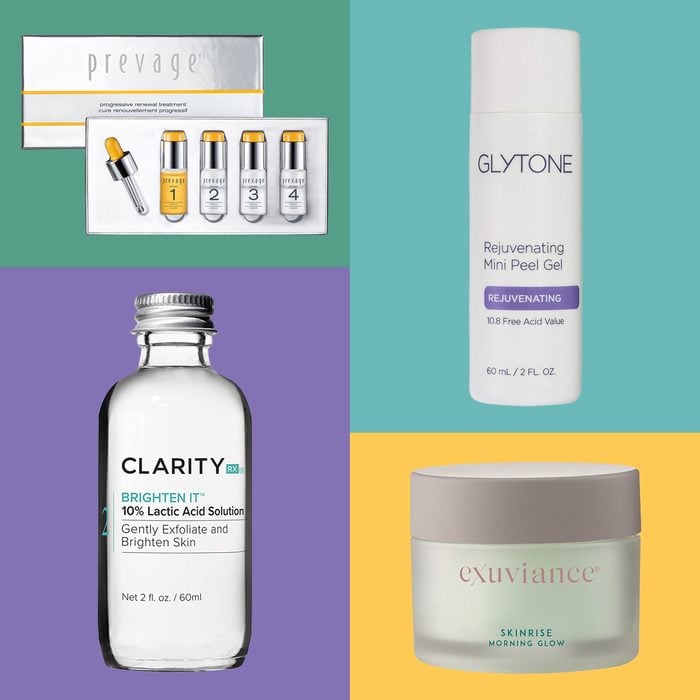
Using a chemical peel at home
Cosmetic treatments come and go, but those with staying power have one thing in common: They truly produce results. Take, for instance, chemical peels. By applying a chemical solution to your skin, you can slough away damaged and old skin cells, allowing healthy skin to grow in their place. The treatment effectively smooths wrinkles, fades hyperpigmentation and age spots, clears acne, and improves skin tone and texture. The best part? You can do a chemical peel at home.
Compared to getting a heavy-duty chemical peel at your dermatologist’s office, doing a chemical peel at home lets you use many of the same ingredients at more affordable prices and without the downtime that can come from in-office peels. That may be one reason why home peels are on the rise. “The popularity of at-home chemical peels increased while the pandemic arose as self-care was one of the only calming aspects during these unprecedented times,” says Dendy Engelman, MD, a dermatologist with Shafer Clinic in New York City.
When shopping for the best at-home chemical peel, look for ingredients such as glycolic, lactic, mandelic, salicylic, and polyhydroxy acids as well as retinol, says Tiffany Jow Libby, MD, director of dermatologic surgery at Brown Dermatology and an assistant professor of dermatology at Brown University. “Alpha hydroxy acids [AHAs] like glycolic, lactic, and mandelic dissolve dead skin cells, increase cellular turnover, and have proven skin benefits for pigmentation, collagen production, and fine lines and wrinkles,” she says.
But just as you would when shopping for anti-aging creams and facial scrubs and exfoliators, you must keep your skin type in mind. If you have normal skin, for instance, you may be able to start with peels that contain 5 to 10 percent glycolic acid. (Don’t go higher than that, though, because you can harm your skin.) If you have sensitive skin, a powerful peel could cause irritation.
How we chose the best at-home chemical peels
There’s a lot to consider when it comes to shopping for a chemical peel you can do at home, but don’t feel overwhelmed. We tapped top dermatologists, aestheticians, and plastic surgeons to find out which products make doing a chemical peel at home easy, painless, and well worth your money. Combine those expert recommendations with user reviews and experiences and you have our comprehensive list of the best at-home chemical peels for every skin type at every price point.
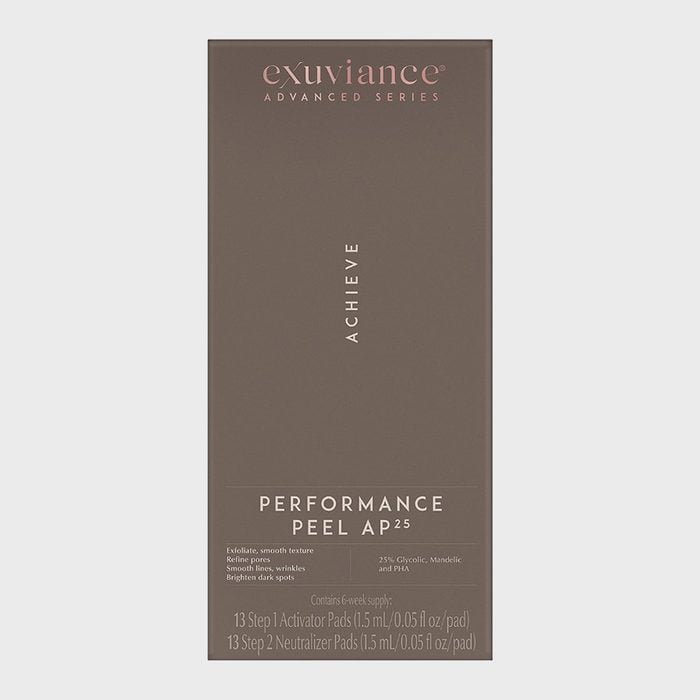 via ulta.com
via ulta.com
Exuviance Performance Peel AP25
Best for: Brighter skin
This two-step at-home chemical peel contains glycolic, mandelic, and polyhydroxy acids, along with a neutralizer pad, to remove dead, dull skin cells. “It increases cell turnover, revealing brighter and smoother skin,” Dr. Libby says.
It can be used up to twice a week on your face, chest, and the backs of your hands. Follow it up with a moisturizer—and yes, we’re talking about face cream and hand cream.
Highlights:
- Professional-level results
- Easy to use
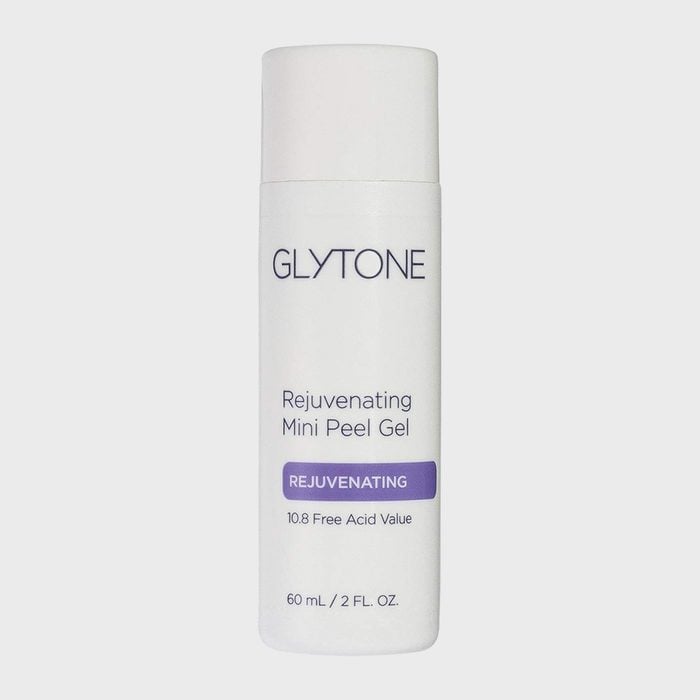 via amazon.com
via amazon.com
Glytone Rejuvenating Mini Peel Gel
Best for: Premature aging
Glytone’s treatment is a favorite of Connecticut-based dermatologist Mona Gohara, MD. “This is a cult-classic peel that you can do at home,” she says. Use it weekly to improve skin texture, unclog pores, and revive dull, tired-looking skin.
In general, sensitive skin types should approach glycolic acid with caution. It’s the smallest of the AHA molecules and tends to penetrate deepest. “While this means more efficacy, it also may cause irritation, so if you have sensitive skin, I would start with larger molecules like mandelic and lactic acid, which still help exfoliate but with less irritation,” Dr. Libby says. The good news: Dr. Gohara says Glytone’s product is safe and effective for sensitive skin and brown and black skin. Of course, if you have sensitive skin, it’s all the more reason to follow your peel with a moisturizer with SPF.
Highlights:
- Safe glycolic acid option for sensitive skin
- Unscented
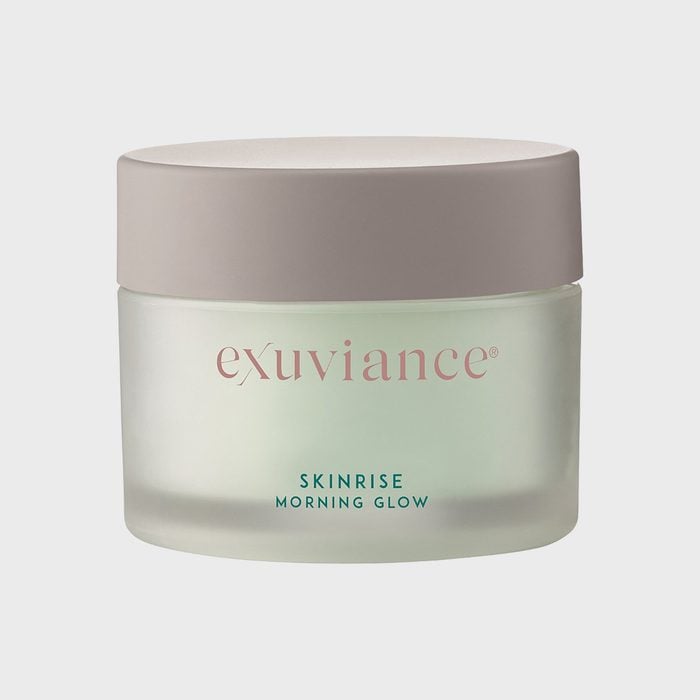 via ulta.com
via ulta.com
Exuviance SkinRise Morning Glow Pads
Best for: Daily use
Believe it or not, people with sensitive skin can do a chemical peel at home without irritation. They just need to start with polyhydroxy acids. “These are the largest of all the chemical exfoliant molecules and are gentle enough for sensitive skin types while still offering many of the same benefits,” says Dr. Libby. Exuviance’s SkinRise Morning Glow is a purely polyhydroxy acid chemical peel. The pads are gentle enough for daily use. Antioxidants, including green tea and cucumber extracts, protect the skin against damaging free radicals and soothe irritation, she adds. To further protect your face, smooth a face serum over clean skin before applying moisturizer.
Highlights:
- Ideal for sensitive skin
- Contains antioxidants
- Easy to use
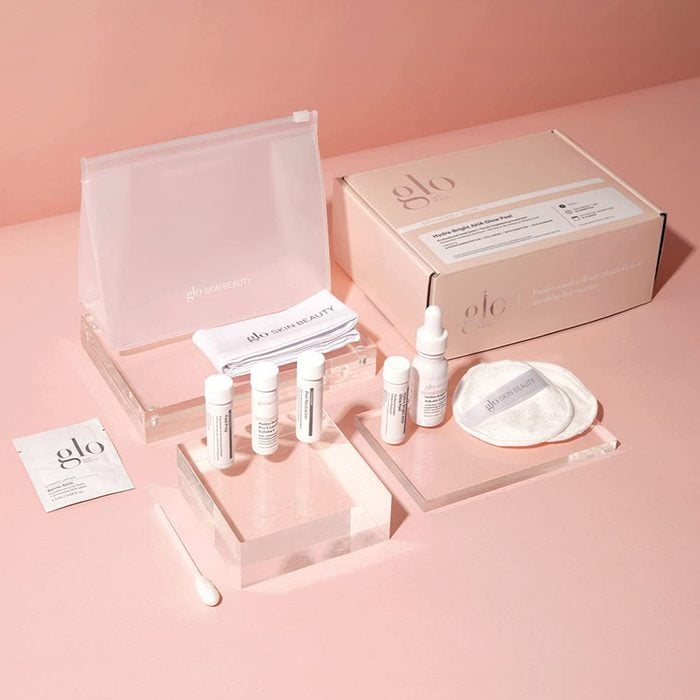 via amazon.com
via amazon.com
Glo Skin Beauty Hydra-Bright AHA Glow Peel
Best for: Fading dark spots
This at-home peel helps brighten the skin, alleviating dullness and fading dark spots or uneven tone while hydrating your skin at the same time, according to Dr. Engelman. “The combination of vegan lactic and ferulic acids make it a safe peel even in the warmer months because these acids are less sun sensitive, and the added niacinamide and hyaluronic acid protect our skin barrier so that the skin is not overworked and susceptible to irritation,” she says.
Your post-peel plan? Hydrate and protect. Slather on a rich moisturizer, add sunscreen during the day, and swipe on a hydrating SPF lip balm to do your pucker proud.
Highlights:
- Professional-level peel
- Free of harmful chemicals
- Vegan and cruelty free
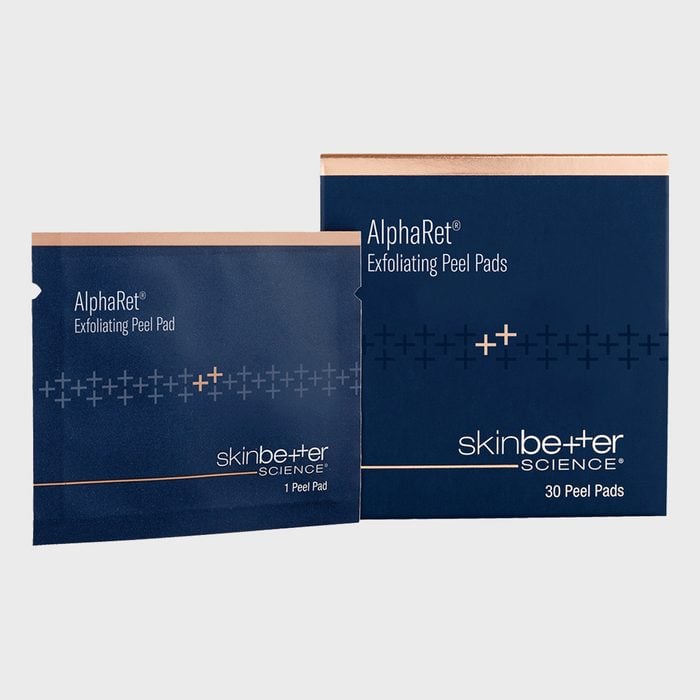 via skinbetter.com
via skinbetter.com
Skinbetter Science AlphaRet Exfoliating Peel Pads
Best for: Easy application
These pads earn high marks from many top derms. “These at-home peel pads can help improve the appearance of skin imperfections while being gentle enough for use multiple times a week,” says Jeremy Brauer, MD, founder and medical director of Spectrum Skin and Laser and a clinical associate professor of dermatology at NYU Langone Medical Center. They incorporate a proprietary combination of AlphaRet (a combination of alpha hydroxy acid and retinol) and a triple-acid complex (glycolic, lactic, and salicylic) to remove dead skin and prevent clogged pores.
“Salicylic acid is particularly helpful for oily and acne-prone skin types, and lactic acid moisturizes while it exfoliates to help keep the skin healthy,” adds dermatologist Hadley King, MD, a clinical instructor of dermatology at the Weill Medical College of Cornell University. Bonus: Rub them over your upper arms or chest to help reduce any keratosis pilaris bumps after you’re done with your face.
Highlights:
- Includes retinol for anti-aging
- Easy to use
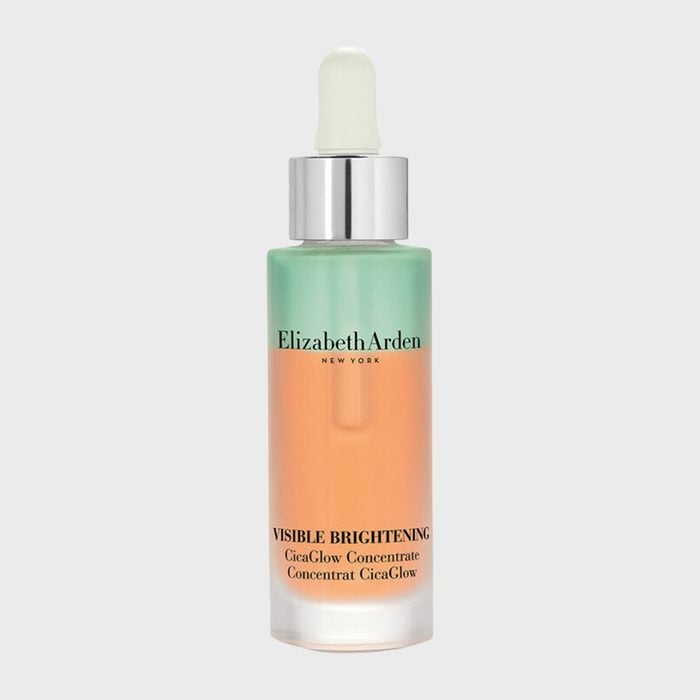 via elizabetharden.com
via elizabetharden.com
Elizabeth Arden Visible Brightening CicaGlow Concentrate
Best for: Radiant skin
Instead of harsher acids, this peel combines niacinamide, chestnut extract, Cica, vitamin C, angelica root, and Persian silk tree to both exfoliate and soothe skin. (Cica, aka Centella asiatica and tiger grass, reduces redness and the signs of aging.) “These natural oils and gentle exfoliants work to soothe, brighten, and smooth the complexion,” says Dr. Engelman. It’s a great peel for anyone who needs to boost their cell turnover due to uneven tone and dark spots or wants brighter, more “glowy” skin. Another plus? This formula is gentle enough to use every day.
Highlights:
- Gentle formula
- Free of drying alcohols
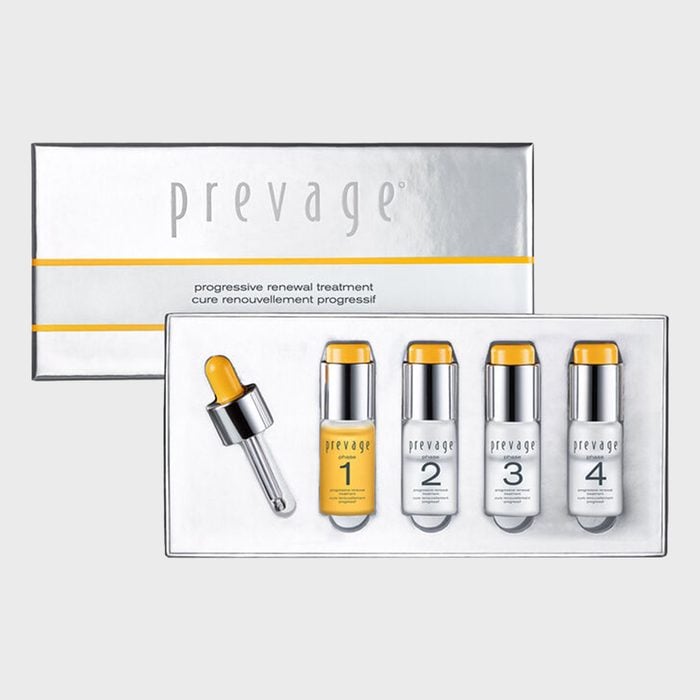 via elizabetharden.com
via elizabetharden.com
Elizabeth Arden Prevage Progressive Renewal Treatment
Best for: Dull, dry skin
The actives in this peel include hydroxy acids, the potent antioxidant idebenone, and phosphate salts to balance the skin’s pH. “It gently exfoliates surface skin cells over four weeks of use,” says Dr. Engelman. That’s right: You won’t jump straight into harsh acids. Instead, the treatment will slowly condition the skin for a stronger level of acids at week four.
“Typically, I recommend this for someone with drier skin in their mid-40s and up or anyone who is suffering with adult acne,” she says, noting that at the four-week mark, you should see increased brightness and smoother skin with fewer fine lines and wrinkles. “Your pores appear smaller and your overall skin tone is more even and more youthful.” Just be sure you hydrate after doing a chemical peel at home. The best lotions for dry skin will draw moisture to the skin and lock in hydration to prevent water loss.
Highlights:
- Strength progressively increases to avoid irritation
- Contains antioxidants
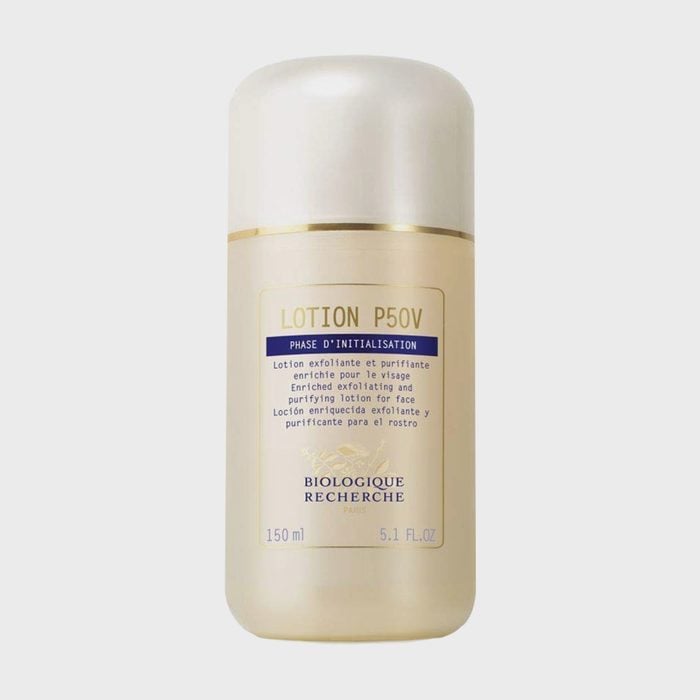 via amazon.com
via amazon.com
Biologique Recherche Lotion P50V
Best for: Gentle exfoliation
Don’t let the name fool you: The cult-favorite P50V isn’t a lotion in the typical sense of the word. It’s a liquid exfoliant that purifies, balances, cleanses, and reconditions your skin, explains Sarah Akram, an aesthetician in Alexandria, Virginia, who recommends the product. Lotion P50 comprises a unique blend of AHA, BHA, and PHA, plus active ingredients that further improve your skin.
Because the formula is gentle, “you can apply your Lotion P50 daily,” she says. It will fall right after cleansing in your skin care routine order.
Highlights:
- Hydrates while exfoliating
- Gentle formula
 via zoskinhealth.com
via zoskinhealth.com
ZO Skin Health Enzymatic Peel
Best for: Reversing sun damage
Rich in skin-loving AHAs to help revive dull and rough-textured skin, this at-home chemical peel also contains papain and bromelain enzymes that exfoliate and slough away dead cells on the skin’s surface. What’s more, a combination of natural sunflower and safflower oils restore skin lipids and replenish hydration, says New York City facial plastic surgeon Steven Pearlman, MD. “We recommend leaving it on the skin without rinsing off for best results,” he says. “With regular use, this home peel will improve the signs of cumulative sun damage.” You know what that means: You can skip heavy foundation and rock that natural makeup look with confidence.
Highlights:
- Easy to use
- Contains oils to repair the skin’s lipid barrier
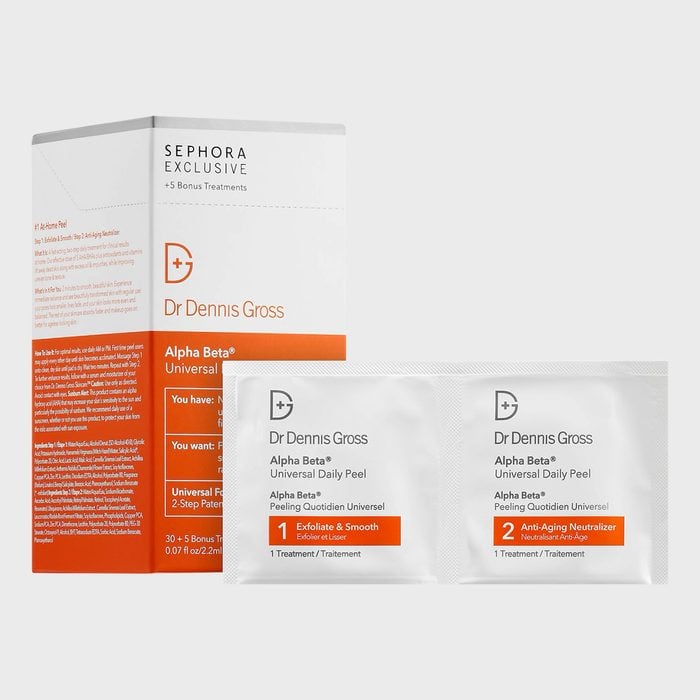 via sephora.com
via sephora.com
Dr. Dennis Gross Alpha Beta Universal Daily Peel
Best for: Acne-prone skin
This at-home chemical peel routinely scores high marks with regular users. The two-step anti-aging AHA/BHA peel comprises five acids to visibly reduce dullness, uneven texture, pores, and dark spots. Step one exfoliates, and step two neutralizes the alpha and beta hydroxy acids to deliver anti-aging ingredients (like retinol) that target fine lines and wrinkles, uneven texture, and dark spots. The actives penetrate deeper into the skin after the exfoliation. One Sephora reviewer goes so far as to say it’s a lifesaver. “This stuff is literally amazing,” she continues. “I’ve been struggling with clogged pores and hyperpigmentation for the last year, and my texture is the smoothest it’s been in a year and my clogged pores have significantly reduced.
Highlights:
- Gentle enough for daily use
- Vegan and cruelty free
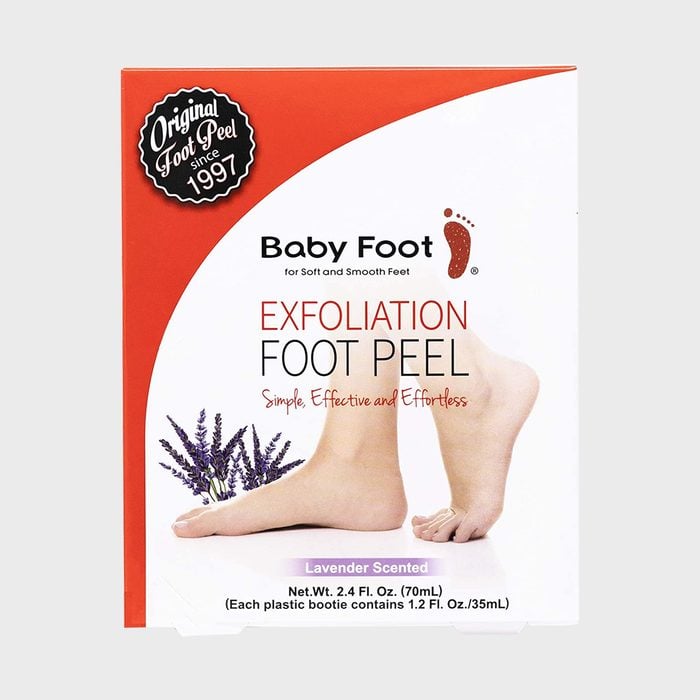 via amazon.com
via amazon.com
Baby Foot Exfoliation Foot Peel
Best for: Calloused feet
This best seller earns rave reviews and repeat customers across the board. It’s scored more than 27,000 five-star reviews on Amazon alone. As one reviewer puts it: “WOW. Just WOW! I rarely take the time to write product reviews, but, honey, this stuff is the real deal.”
The Baby Foot special sauce contains 16 types of natural extracts that exfoliate and moisturize at the same time. Fruit acids penetrate into the layers of dead skin cells and break down the structures that hold the skin layers together. Wait three or four days, and your feet will begin to peel … and peel and peel. Follow the instructions on the label closely for best results.
Highlights:
- Strong enough for the thick skin of your feet
- Affordable
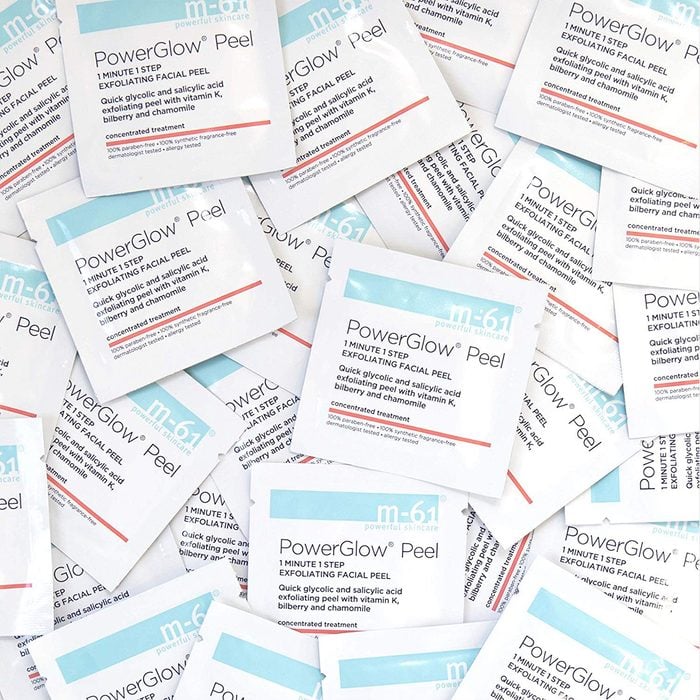 via amazon.com
via amazon.com
M-61 PowerGlow Peel
Best for: Shrinking pores
Can you do a chemical peel at home in less time than it takes to make popcorn? You bet. This at-home chemical peel takes only one minute and uses glycolic and salicylic acids to reduce pore size and the appearance of fine lines and improve the skin’s overall quality. It’s also rich in vitamin K, helps reduce the appearance of spider veins, and combats dry, red, and inflamed skin. Chamomile and lavender pitch in to calm and soothe irritation. As one verified buyer writes, “I love how it has cleaned up the appearance of my pores and gives my skin a glowing, smoother look.”
Highlights:
- Contains antioxidants
- Quick to use
- Vegan
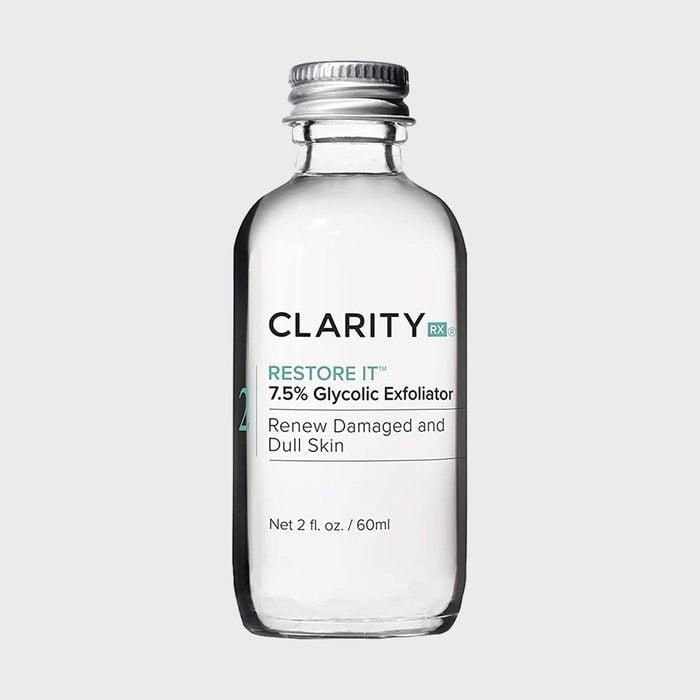 via amazon.com
via amazon.com
ClarityRx Restore It
Best for: Anti-aging benefits
This 7.5 percent glycolic exfoliator will smooth fine lines and boost collagen production by activating fibroblasts under the skin’s surface, explains Suneel Chilukuri, MD, a cosmetic dermatologic surgeon and director of cosmetic surgery at Refresh Dermatology in Houston. Collagen is one of the main proteins that give skin its supple, elastic properties, but our supply nosedives with advancing age. This at-home chemical peel is strong enough to have a real effect but won’t burn your skin, he says.
Highlights:
- Free of harmful chemicals
- Fragrance free
- Cruelty free
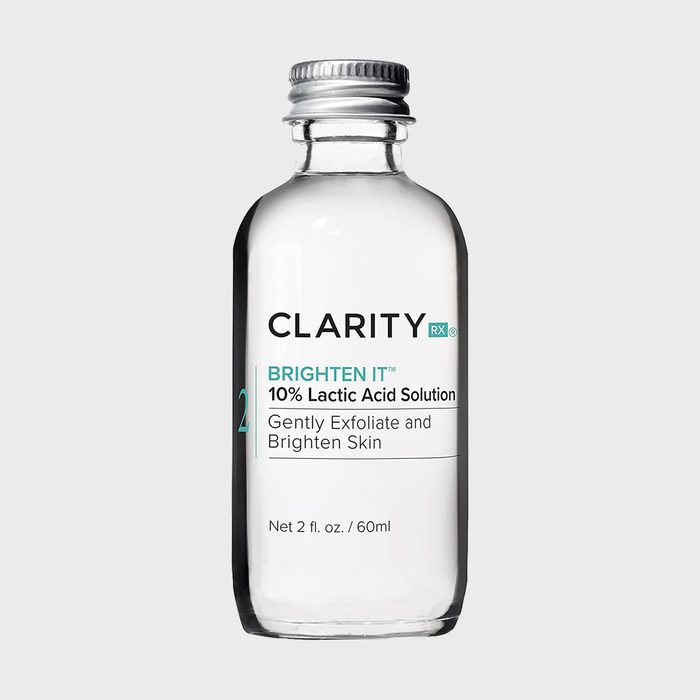 via amazon.com
via amazon.com
ClarityRx Brighten It
Best for: Improving dull, uneven tone
Another winner from ClarityRx, Brighten It contains a 10 percent lactic acid solution and has potent anti-inflammatory properties. “It brightens the skin by calming down the melanocytes, or pigment-producing cells,” Dr. Chilukuri says.
It’s a smart pick for people with dry skin, who may need an acid that adds moisture. “Lactic acid is also a humectant and helps bring moisture to the skin while exfoliating,” Dr. Libby says.
Highlights:
- Good for dry skin
- Free of harmful chemicals
- Fragrance free
- Cruelty free
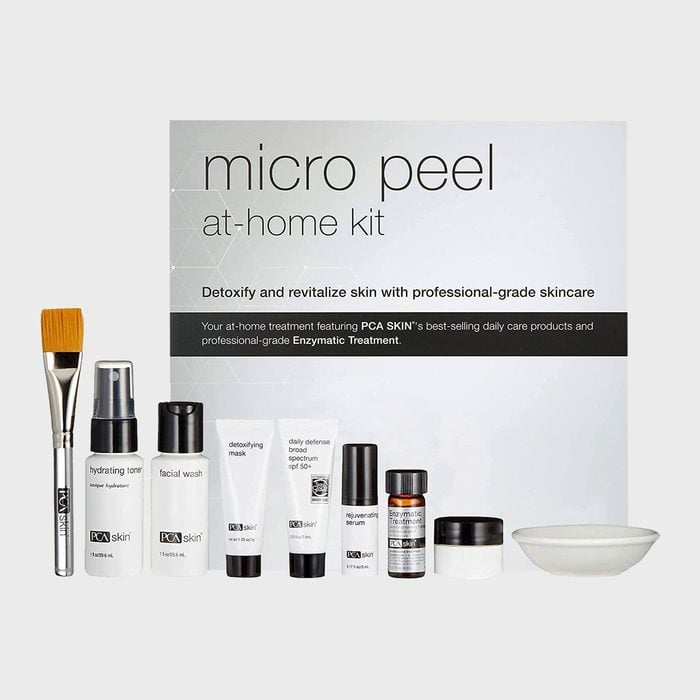 via amazon.com
via amazon.com
PCA Skin Micro Peel At-Home Kit
Best for: Pro-level results
This treatment sits at the higher end of the cost spectrum for a reason: It’s the same strength peel you can get in a dermatologist’s office, says Dr. Chilukuri. The kit might look complex, but you’re not totally on your own here. The brand provides easy-to-follow instructions so you can safely use this chemical peel at home. Even better, it comes with post-care products like moisturizer and sunscreen to hydrate and protect your post-peel skin.
“It’s perfect before a corrective procedure such as laser skin resurfacing, as it breaks down amino acids to shed older skin cells so you get better results,” he says. “I want to make sure my patient’s skin is healthy before I treat it with a laser treatment to remove sun damage or improve acne, and this is my go-to.”
Highlights:
- Professional-level peel
- Kit includes moisturizing and sun-protective products
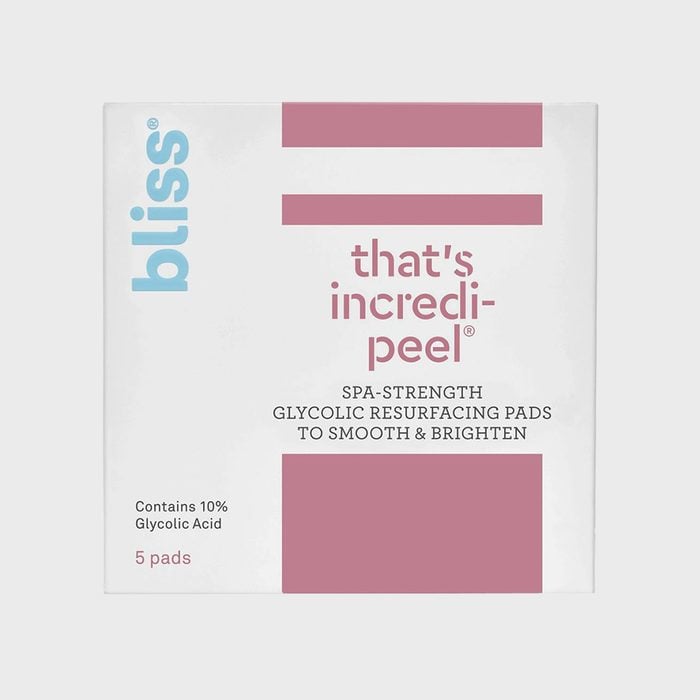 via target.com
via target.com
Bliss That’s Incredi-Peel
Best for: All skin types
These pads contain 10 percent glycolic acid, which can be used across almost all skin types, says Joshua Zeichner, MD, director of cosmetic and clinical research in dermatology at Mount Sinai Hospital in New York City. “It can improve skin tone, texture, and radiance,” he says. Plus, data shows that glycolic acid can even help stimulate collagen to improve the appearance of fine lines and wrinkles.
Highlights:
- Free of harmful chemicals
- Vegan and cruelty free
- Easy to use
Sources:
- Dendy Engelman, MD, a dermatologist with Shafer Clinic in New York City
- Tiffany Jow Libby, MD, director of dermatologic surgery at Brown Dermatology and assistant professor of dermatology at Brown University’s Warren Alpert School of Medicine in Providence, Rhode Island
- Mona Gohara, MD, a dermatologist based in Connecticut
- Hadley King, MD, clinical instructor of dermatology at Weill Medical College of Cornell University in New York City
- Jeremy Brauer, MD, founder and medical director of Spectrum Skin and Laser and clinical associate professor in the Ronald O. Perelman Department of Dermatology at NYU Langone Medical Center in New York City
- Sarah Akram, an aesthetician in Alexandria, Virginia
- Ava Shamban, MD, a dermatologist in Los Angeles
- Steven Pearlman, MD, a facial plastic surgeon in New York City
- Suneel Chilukuri, MD, a cosmetic dermatologic surgeon and director of cosmetic surgery at Refresh Dermatology in Houston
- Joshua Zeichner, MD, director of cosmetic and clinical research in dermatology at Mount Sinai Hospital in New York City
